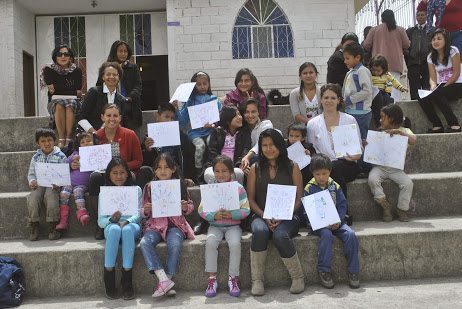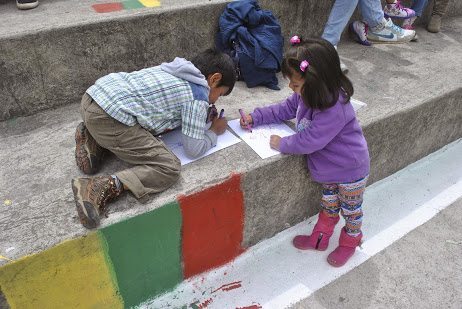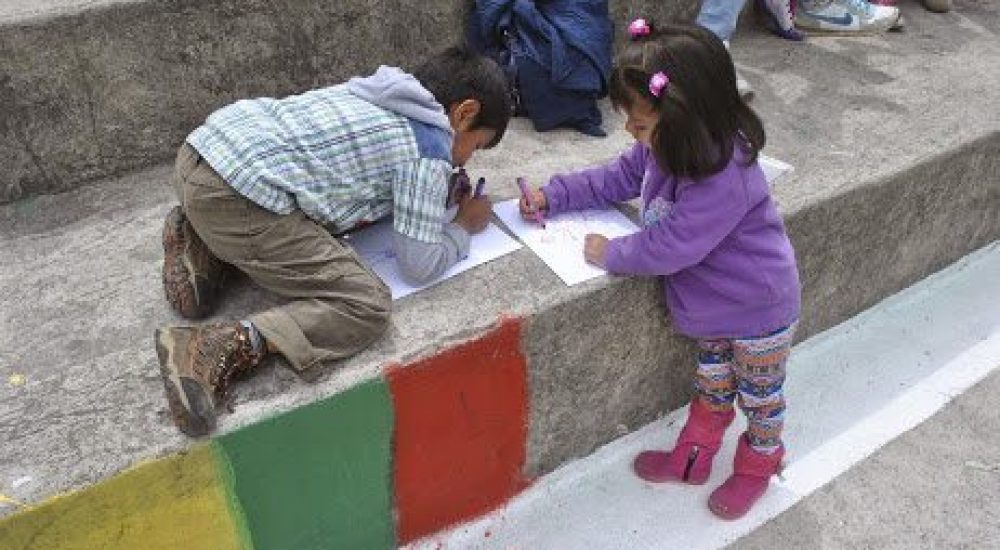Asia Society and BOOST Collaborative are partnering to create a series of blogs on global learning in out-of-school time. This month features Jamaine Smith from BuildaBridge International.
In Argelia, Ecuador, the eyes of eight children lit up as children from Philadelphia appeared on the screen of the small tablet they were going to use to complete their video call. They were elated as a symphony of “Hola!” and “¿Como Estas?” erupted from the mouths of the Philadelphian children, who were equally elated to use their small Spanish vocabulary to engage in dialogue with native Spanish speakers. The two groups of children were 2,891 miles away from each other, each on a completely different continent, separated by a vast ocean. Yet, here they were, excitedly preparing for a video conference through Skype to discuss all they learned during their time in BuildaBridge International’s seven day Global Artology project.

What is the Global Artology Project?
The Global Artology project was based on Artology, a Philadelphia-based, interdisciplinary dynamic 5-7 week summer learning program that utilizes Philadelphia’s neighborhoods, parks, and museums as interactive classrooms in which to provide interactive and experiential learning through a challenging and comprehensive curriculum designed by professional artists, science teachers, and medical students.
Through Artology, students:
Explore: Discover the importance of environmental responsibility by engaging in critical discussions, participating in neighborhood cleanup, and practicing “Reduce, Re-Use, Recycle”.
Inquire: Practice scientific inquiry such as observing, classifying, measuring, comparing and contrasting, recognizing patterns, formulating hypothesis, and experimenting.
Create: Make art! They are guided by exemplary works of art while learning key elements and principles of art and media technique.
As a new initiative of the Artology program, the Global Artology project focused on the importance of water access and conservation for the environment.
A Global Artology Activity
Divided into four groups, the children and their leaders were instructed to take note of:
(1) places that made them feel safe
(2) places that made them feel unsafe
(3) instances of clean, healthy water and finally
(4) any water that seemed contaminated, dirty or unhealthy
 An excerpt from a teacher’s note from our Global Artology project Ecuador team reads:
An excerpt from a teacher’s note from our Global Artology project Ecuador team reads:
Children noted that clean drinking water was available for purchase at the stores we happened to pass but also noted a stream of “agua contaminado” (contaminated water) coming from a burst pipe in the street. They identified the police as a source of safety in the community and explained that the streets and park are not safe at night because of drunks and drug addicts. Additionally, one teenager explained that the bridge crossing a small valley was not safe for them because thieves tend to exploit the foot traffic.
After mapping their neighborhood, the students brainstormed three great solutions that might improve both the safety of their community and the cleanliness of their water. The first was the addition of lights to the streets to increase their safety, the second was the placement of trashcans at corners to reduce litter and pollution, and the third was to show their map to the president of their community, who just so happens to be the pastor of the church where Artology is being held.
Our Philadelphia group did not go on a community walk, but were engaged in the same type of investigation through in class discussion, field trips to sites such as The Philadelphia Water Works, and interactive chats with guest speakers (such as Environmental Artist Stacey Levy). Through these processes, both groups recognized their role in the improvement of the water health in their communities. They were not just “little kids,” but agents of environmental change!
The Information Exchange
After the initial greetings of “Hola!” and “¿Como Estas?”, each group enjoyed sharing their scientific discoveries and solutions to their specific community’s water access/health problems via video conference. Through a translator, our Ecuadorian children presented their artwork created to represent their solutions to the water problems discovered on their community walk. Our Philadelphian children showed abstract visual representations of the water cycle, explained their creative process, and the steps of the water cycle itself.
Although, they enjoyed sharing their scientific discoveries and artwork, each group seemed to equally (or more so) enjoy asking each other questions such as “What type of food do you eat?”, “What was your favorite part of Artology?” and “What do you do for fun?” Much giggling and many “Wow’s” were uttered as children from both groups realized their similarities and differences as each question was answered. They realized they did not speak the same language, play the same games, or even eat the same type of foods, but both groups were united by the issue of water health and conservation in their communities. There were not burst pipes in the Philadelphian group’s community, but they understood the concept of ” agua contamindo” through the trash they saw floating in the Tacony Creek during their weekly visit to the Tacony Creek Park.

Outcomes
The Global Artology project aligned with BuildaBridge’s mission to engage creative people and the transformative power of art making to bring hope and healing to children, families, and communities in the contexts of crisis and poverty. The project empowered the children in both Ecuador and Philadelphia by increasing their understanding and awareness of water’s importance, allowing them to come up with their own solutions to discovered programs through experiential learning, and foster cross-cultural exchange and global cultural awareness.
Access to technology for underserved populations was also facilitated through education on and the use of tablets and video conferencing. As a gift toward the sustainability of technological access and learning, the tablets were gifted to the student groups at the close of the project. In addition, the solutions the Ecuadorian children came up with were taken very seriously by their community president and are in the process of being implemented.
For breakfast, I had turkey bacon, eggs, and toasted challah bread.
